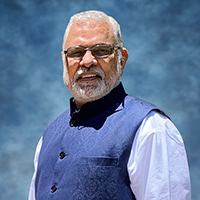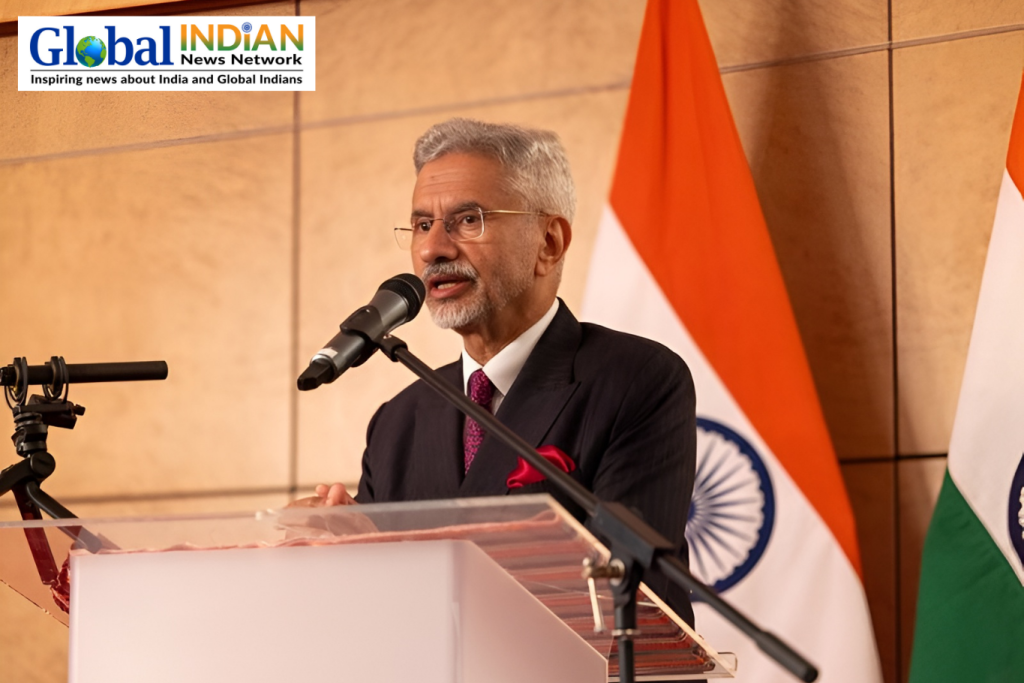Negative news about India is more exciting and sells more copies
|
You’ve probably heard the expression “half-full” or “half-empty” used to describe how people tend to focus on either the good or negative aspects of a situation. Extrapolating this comparison, I regret to state that most Indian-American journalists and American media outlets’ coverage of reporting on India not only sees the glass half empty but also sees fingerprints all over the glass. Not only they cover mostly negative news about India but when they also cover half truth
Amol Parth recently undertook an in-depth review of more than 3,000 India-related articles carried by The New York Times, The Washington Post, The Wall Street Journal, Time and The Guardian. In his report “An Analysis of Global Media Coverage of Events in India” found a consistent pattern of emphasizing political controversies in India with sensational headlines and keywords. This has resulted in a negative feedback loop from India-centric controversies which has created a perverse incentive for Indian-origin journalists and writers to contribute to global media outlets.
Knowing the fact that popular American Media like New York Times, Washington post or CNN always talks negatively about India, Indian- American Journalists write only negative news about India so they get published in these Media.
India’s Minister of External Affairs S Jaishankar recently spoke out against the “biased” coverage of American media, calling out several outlets for their angled coverage of several issues and matters pertaining to India.
External Affairs Minister Jaishankar said it best when he said “My point is there are biases, there are efforts really, to determine, …. Look, the more India goes its way and the people who believe that they were the custodians and the shapers of India lose ground in India the more actually, some of these debaters are gonna come outside.” Unfortunately, this is a truth that Indian-Americans often have to grapple with. American media often write only the dark side about India, focusing on terrorism and conflict.
It doesn’t matter what faith the person who’s killed belongs to – if there is a terrorist incident, it gets reported and sensationalized. Indian soldiers, Indian policemen, people working for the government, and citizens going about their business can lose their lives, but these stories do not make as many headlines as other stories do. It’s a sad reality that media coverage shapes opinions and perceptions.
We must remember that it is important to express our opinions and share them with others. We must also take the time to educate ourselves and others on what is right and wrong.
External Affairs Minister Jaishankar said it best again when he said “We should not let it go. We should contest it. We should educate. We should shape the narrative. This is a competitive world. We need to get our messages out. That is my message to you.”
Op-eds of The New York Times, The Washington Post, Gulf News, The Guardian and others are mostly written by Modi-hating Indians like Rana Ayyub and Swati Chaturvedi.
The Washington Post has access to a number of think tanks within a 2-km radius of their K Street headquarters, such as the Heritage Foundation with Jeff Smith, Carnegie with Ashley Tellis, Observer Research Foundation (ORF) with Dhruva Jaishankar, Stimson Center with Sameer Lalwani, and Center for Strategic and International Studies (CSIS) with Richard Rossow.
Despite having access to these think tanks and their experts, The Washington Post’s go-to interpreter of India is Rana Ayyub. This is likely because few outside the policy circle have heard of the other experts and their precision and nuance is for the technically minded. Notably, the Supreme Court rejected her book Gujarat Files – Anatomy of a Cover Up.
Furthermore, foreign journalists in Delhi are influenced by the likes of Rana Ayyub, Arundhati Roy, and Pankaj Mishra who validate their pre-existing views.
This is due to the social dynamics of Delhi where White people slot themselves into a social strata that would be well outside their station back home.
Negative news About India is More exciting and sell more copies of Newspaper
Recent studies have found that negative news about India is more likely to be published than positive news. In fact, a recent survey conducted by the Centre for Media Studies found that “negative news about India is more than twice as likely to be published than positive news.”
This trend is also seen in social media platforms, where negative news about India has been shown to be more likely to be shared than positive news.
This trend has been noticed by journalists and editors alike. Indian-American journalist Manish Vyas said, “Negative news about India is more likely to be picked up by international media outlets compared to positive news.” Similarly, a prominent newspaper editor noted that “Negative news about India is more likely to be clicked on by readers, thus driving up website traffic and resulting in higher sales of print editions.” It appears that negative news about India is more appealing to the public and therefore more likely to be published and shared.
Indian-American Journalist not Balanced
When Fareed Zakaria, a renowned Indian-American journalist, released his report on the state of India, the author’s opinion of him changed drastically. His writing seemed to be skewed against India, which left the author wondering if his Muslim background had an effect on his journalistic objectivity. What Zakaria failed to recognize was that India is home to a vibrant democracy and is home to people of many different religious backgrounds who live in peace and harmony. Furthermore, Zakaria has never actually visited India, which may have affected his perspective of the country.
Unfortunately, Zakaria’s report was filled with false and baseless claims that were quickly debunked by the Indian government. One such claim was about India’s Citizenship Amendment Act (CAA) which was misrepresented in the media and blown out of proportion. The CAA allows for certain persecuted minorities from certain countries to gain citizenship in India, but does not take away anyone’s citizenship rights or discriminate based on religion. However, this fact is being ignored as organizations like CAIR are attempting to instill fear into the minds of Hindus that their religious freedom is in danger. This could potentially lead to hateful treatment towards Hindus in the future.
In conclusion, it is clear that Zakaria’s report on India was not balanced or objective. He failed to understand the full scope of India’s history, culture and diversity and instead chose to focus on one aspect that would make for a more exciting story.
Ashley Rindsberg on New York Times covering India
The New York Times’ coverage of India has often been orientalist and portrayed India as a backward place characterised by nationalism, violence, and sexual assault. In one of her articles, Ashley Rindsberg quotes “Death is the only truth” as she watches India’s funeral pyres burn. While the statistics of cases in India are a fraction of what the US or Western Europe experiences, the New York Times’ coverage of China is different from its coverage of India. For example, headlines such as “Why India’s farmers fight to save a broken system”, “Under Modi, a Hindu nationalist surge has further divided India”, “What the rape and murder of a child reveals about Modi’s India” and “India’s battered free press” all portray India in a negative light.
Ashley Rindsberg is trying to understand why there is a difference in the coverage of China and India. She is examining how the media can use their reporting to shape our opinions on foreign countries and cultures. In doing so, she is shedding light on how we as readers form our own narratives based on the news we consume.
This trend is likely to continue as India’s significance as a subject of global media interest is expected to rise even further with India all set to assume the presidency of the G20 come December. With such a wide array of potential stories, Indian-origin writers and reporters are likely to find it difficult to remain impartial and focus on both sides of the story.
The real reason for American media to Bash India
A recent report examined the digital readership growth of The New York Times, The Washington Post, The Wall Street Journal, Time, and The Guardian outlets in India between 2019-2021. This report found a strong correlation between viewership spikes in India and controversial topics. The NYT saw its readership decline globally by 8 per cent, but its Indian readership rose by 22 per cent during this period. Similarly, Time, which carried controversial cover stories on India during this period, saw a rise in readership of 50 per cent in India. Even the BBC saw nearly five-fold growth in India over its global growth on the back of its highly provocative reportage on the riots in Delhi and Covid-19 deaths in India.
Clearly, American media outlets are using sensational stories and negative coverage to attract Indian audiences. This is a smart marketing strategy, but it is also detrimental to the true representation of India and its people. Instead of perpetuating stereotypes, it is important for these outlets to provide balanced news coverage that accurately portrays India and its people.
About Author Raj Shah
 A software engineer by profession, Indian culture enthusiast, ardent promoter of induism, and a cancer survivor, Raj Shah is a managing editor of Desh-Videsh Magazine and co-founder of Desh Videsh Media Group. Promoting the rich culture and heritage of India and Hinduism has been his motto ever since he arrived in the US in 1969.
A software engineer by profession, Indian culture enthusiast, ardent promoter of induism, and a cancer survivor, Raj Shah is a managing editor of Desh-Videsh Magazine and co-founder of Desh Videsh Media Group. Promoting the rich culture and heritage of India and Hinduism has been his motto ever since he arrived in the US in 1969.
He has been instrumental in starting and promoting several community organizations such as the Indian Religious and Cultural Center and International Hindu University. Raj has written two books on Hinduism titled Chronology of Hinduism and Understanding Hinduism. He has also written several children books focusing on Hindu culture and religion.










